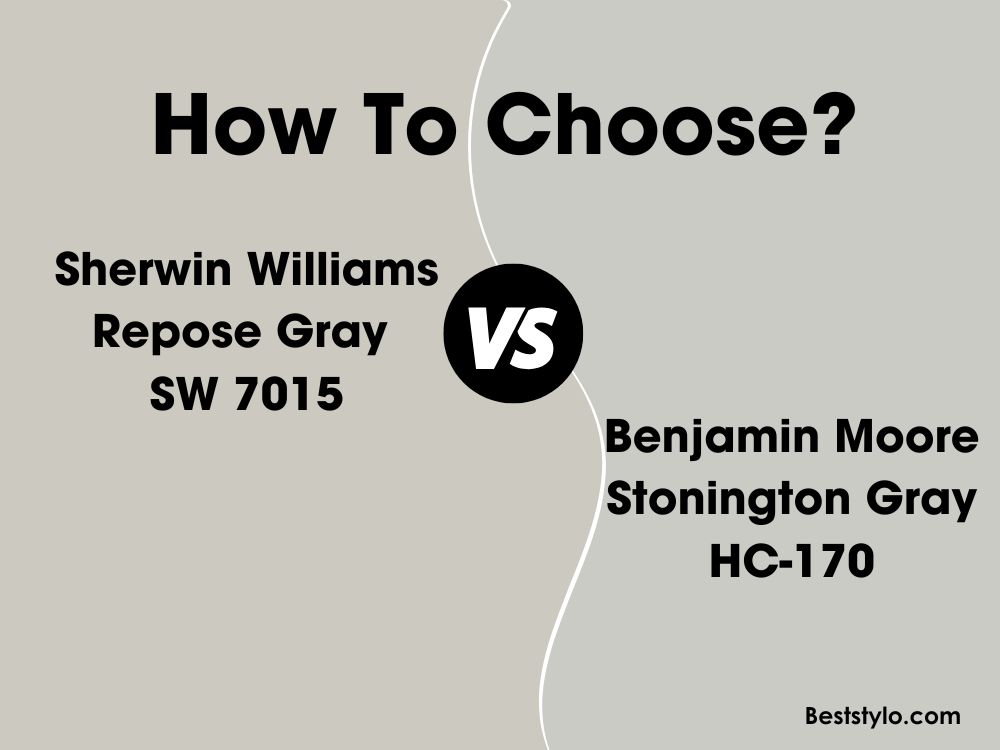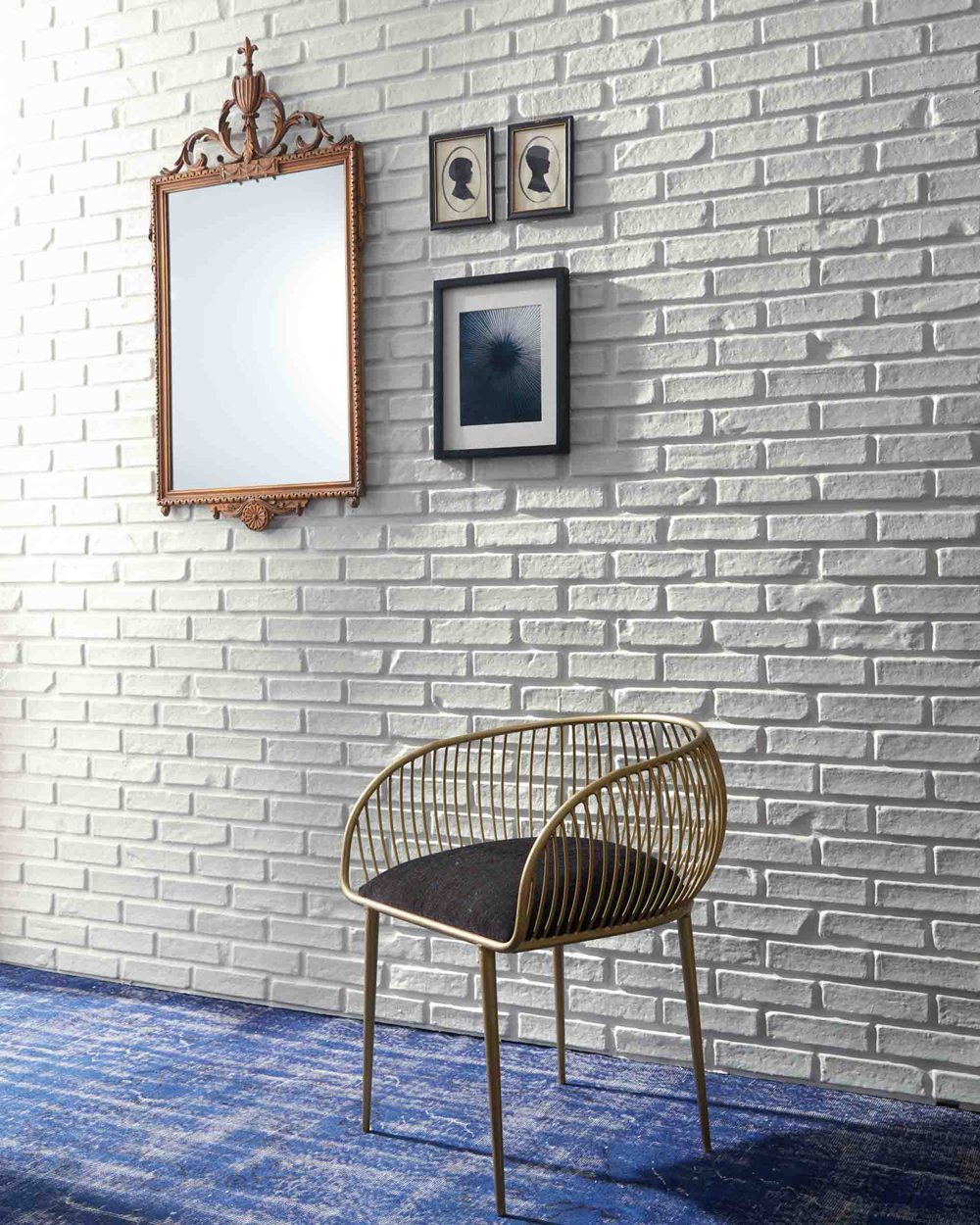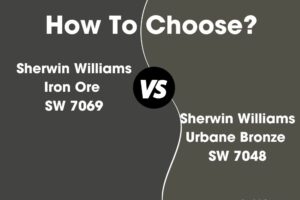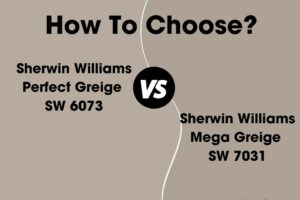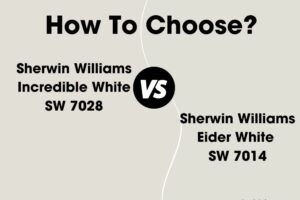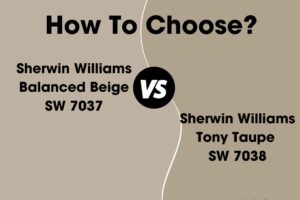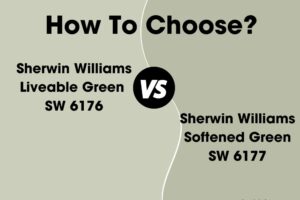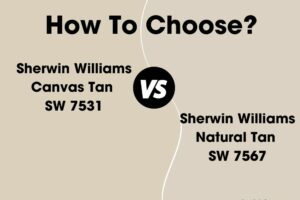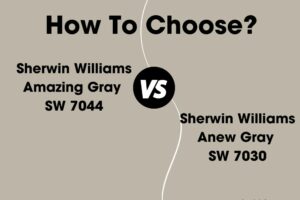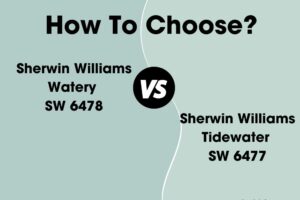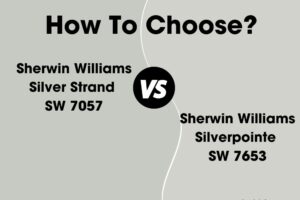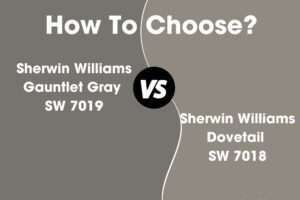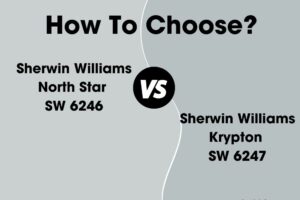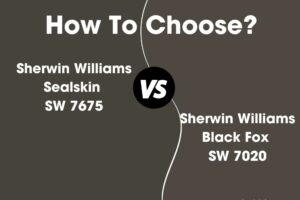When selecting a beautiful, tranquil gray paint color, two top options are Benjamin Moore’s Stonington Gray HC-170 and Sherwin Williams’ Repose Gray SW 7015. At first glance, these two grays may appear very similar. But looking closer, there are noticeable differences between them that impact their aesthetics.
In this article, we’ll compare Benjamin Moore Stonington Gray vs Sherwin Williams Repose Gray in-depth. We’ll examine undertones, LRV, real-world photos, and best room applications. By the end, you’ll understand how these grays differ and which paint color is the ideal choice for your space.
Table of Contents
Key Differences Between Stonington Gray and Repose Gray
Before diving into all the details, here is a brief overview of how Stonington Gray and Repose Gray differ:
- Undertones: Stonington Gray is a green-gray, Repose Gray is a blue-gray.
- LRV: Stonington Gray has a higher LRV of 59.36, Repose Gray is darker at 58 LRV.
- Use: Stonington Gray works well whole-home, Repose Gray best accenting.
- Rooms: Stonington Gray excels in bedrooms, Repose Gray shines in bathrooms.
Now let’s explore Stonington Gray vs Repose Gray more closely!
Benjamin Moore Stonington Gray HC-170
Stonington Gray HC-170 is a gorgeous green-gray paint color with natural, relaxing vibes. Its versatility makes it a popular neutral choice.
Here are some details about Stonington Gray:
- LRV: 59.36
- Undertones: Green-gray
- Sheen: Available in all finishes
- Rooms: Bedrooms, living rooms, offices, dining rooms
- Pairs With: Greens, blues, tans
Stonington Gray is a light-medium gray with subtle green undertones. The faint greenness gives it a laidback, gentle mood without strong color contrast.
With an LRV of 59.36, Stonington Gray reflects a decent amount of light to avoid feeling dark or dreary. The hint of green maintains a tranquil, inviting vibe.
This adaptable green-gray complements a variety of color schemes. Pleasing combinations include:
- Benjamin Moore Simply White
- Benjamin Moore Revere Pewter
- Benjamin Moore October Mist
- Benjamin Moore Coventry Gray
While suitable anywhere, this relaxing green-gray excels when used as the main paint color in bedrooms, living spaces, offices, and dining rooms.
Sherwin Williams Repose Gray SW 7015
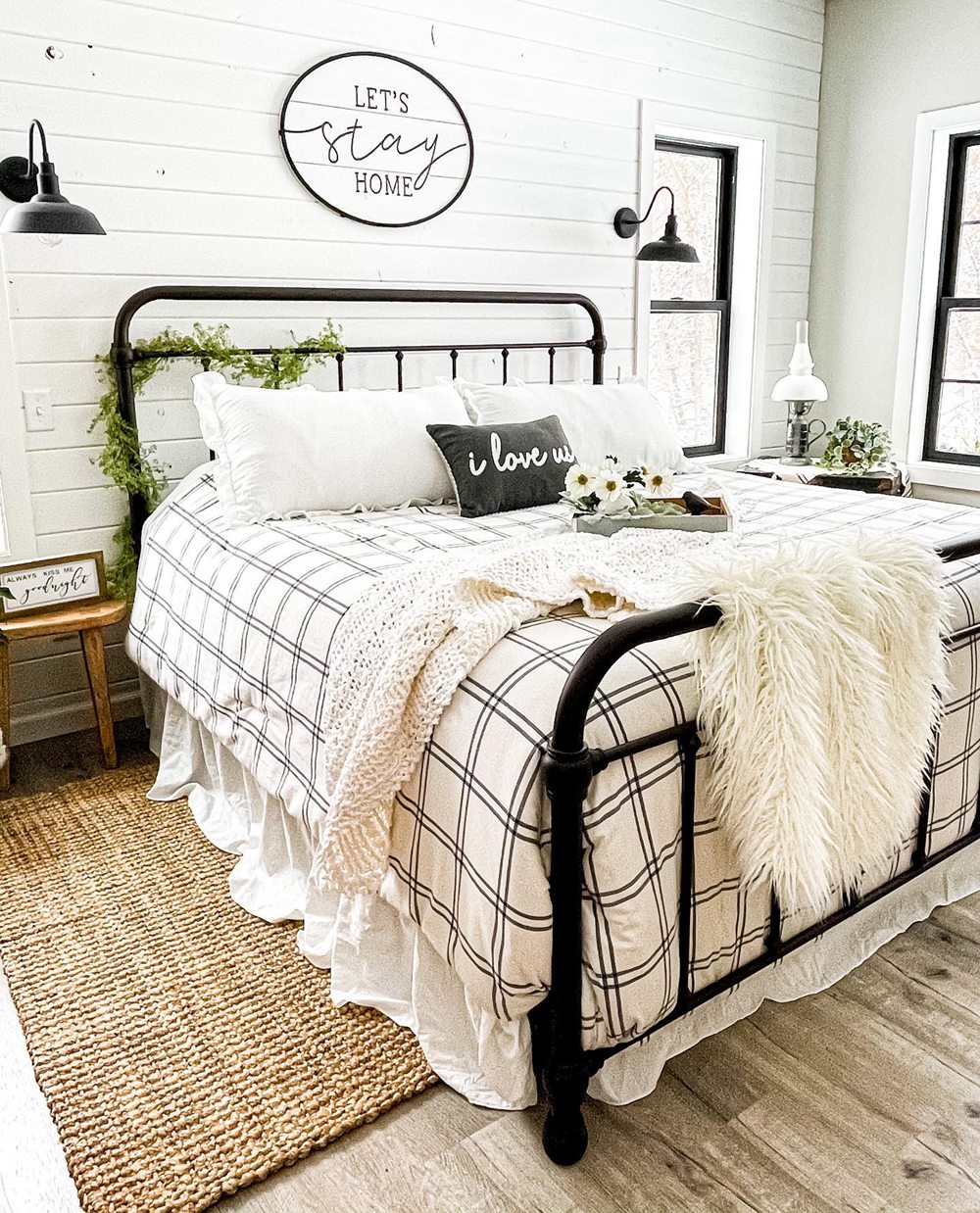
Repose Gray SW 7015 is a beautiful light blue-gray paint color with widespread popularity. Its versatility allows it to suit any style.
Here are some key details about Repose Gray:
- LRV: 58
- Undertones: Blue-gray
- Sheen: Available in all finishes
- Rooms: Bathrooms, kitchens, accent walls, trim
- Pairs With: Grays, blues, whites
Repose Gray is a very light gray with faint hints of cool blue undertones. While it reads as a true gray, the subtle blue gives it a slightly crisp, sharp edge.
With an LRV of 58, Repose Gray reflects a fair amount of light while still providing soft contrast. The bare hint of blue keeps it feeling bright and refreshing.
Some pleasing color combinations with Repose Gray include:
- Sherwin Williams Pure White
- Sherwin Williams Rainwashed
- Sherwin Williams Mindful Gray
- Sherwin Williams Naval
While suitable anywhere, this crisp blue-gray excels when used judiciously to accent bathrooms, kitchens, trim, doors, and focal walls.
Comparing Stonington Gray vs Repose Gray
Now that we’ve explored Stonington Gray and Repose Gray individually, let’s directly compare the two paint colors:
Light Reflectance
With LRVs of 59.36 and 58 respectively, Stonington Gray and Repose Gray reflect similar amounts of light. Both avoid feeling dark or gloomy.
Undertones
Here is the main difference. Stonington Gray is a green-gray while Repose Gray is a blue-gray.
Stonington Gray’s greenness gives it a laidback, gentle vibe. Repose Gray’s blueness feels slightly cooler and crisper.
Rooms
Stonington Gray’s versatility makes it great whole-home, especially bedrooms and offices. Repose Gray excels as an accent in baths, kitchens, and with trim.
Paint Finishes
Both Stonington Gray and Repose Gray come in any sheen from matte to high-gloss. They provide beautiful, refined gray paint finishes.
Stonington Gray vs Repose Gray Comparison Chart
Here is an overview of their major differences:
| Paint Color | Stonington Gray HC-170 | Repose Gray SW 7015 |
|---|---|---|
| LRV | 59.36 | 58 |
| Undertones | Green-gray | Blue-gray |
| Use | Whole-home color | Accent color |
| Sheens | All finishes | All finishes |
Real Rooms Painted in Stonington Gray and Repose Gray
To better envision Stonington Gray vs Repose Gray, let’s look at real rooms painted in the two colors:
Stonington Gray HC-170
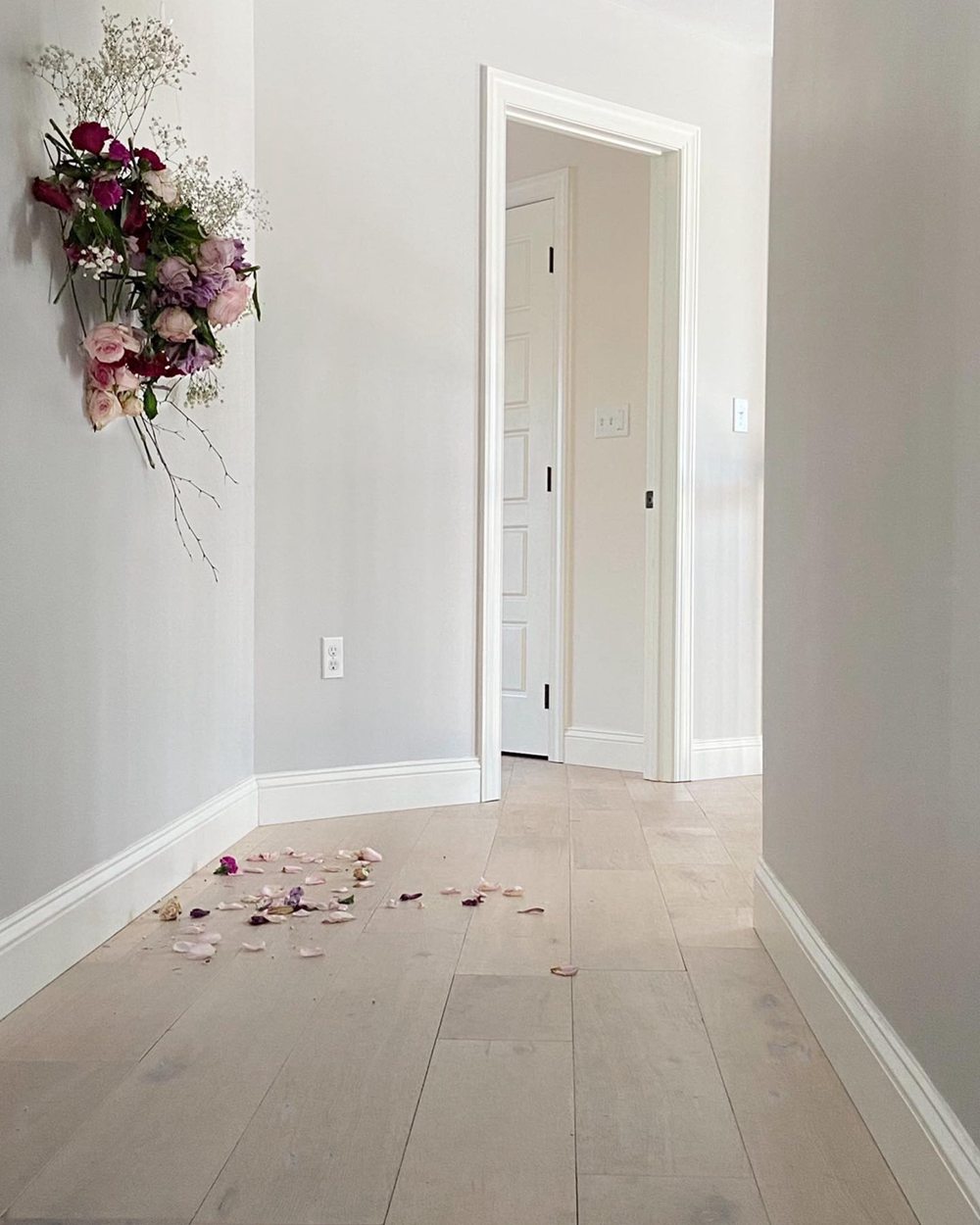
Repose Gray SW 7015
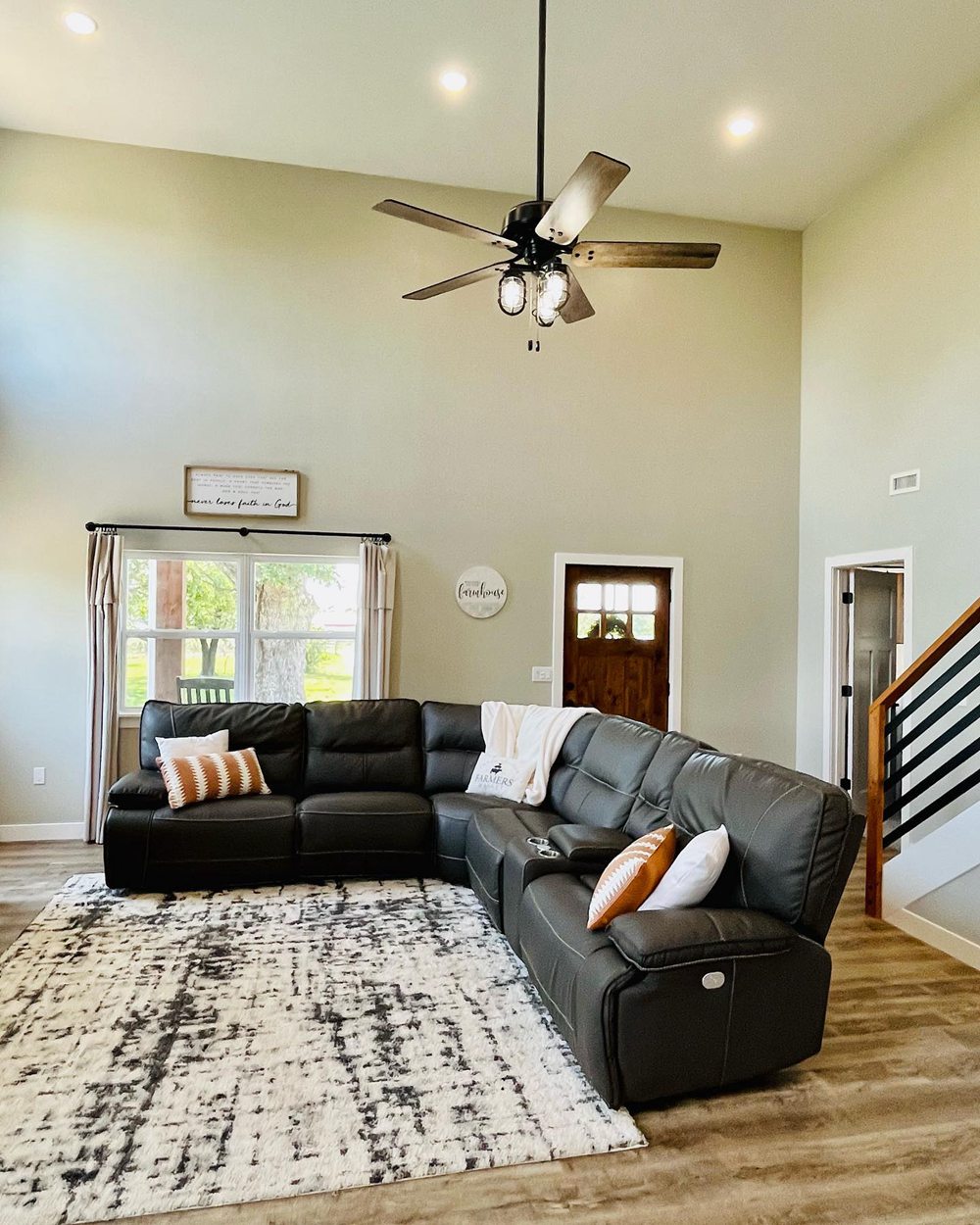
The images showcase the subtle differences in green vs blue undertones. Stonington Gray leans green-gray, while Repose Gray is a blue-gray. But their similar depth can make them seem comparable.
Should You Choose Stonington Gray or Repose Gray?
So which tranquil paint color is better for your space – versatile Stonington Gray or crisp Repose Gray? Here are some tips for deciding:
Pick Stonington Gray HC-170 if you want:
- A light green-gray with relaxing subtle warmth
- A laidback color suitable for whole-home use
- Gentle sophistication for bedrooms and offices
- Soothing tranquility without strong color
Choose Repose Gray SW 7015 if you want:
- A very light blue-gray with a hint of sharpness
- Subtle cool contrast for baths, kitchens, and trim
- A brighter alternative to darker grays
- A crisp, defined gray for architectural details
If still uncertain between the two, get samples and paint large swatches on your walls. View throughout different lighting before deciding.
Either elegant paint color you select will provide beauty and versatility. But their minor differences mean one likely better suits your particular goals and style.
Ideal Room Applications
Here are some rooms that tend to suit Stonington Gray and Repose Gray best:
Stonington Gray HC-170
- Bedrooms
- Living Rooms
- Offices
- Dining Rooms
- Libraries/Studies
Repose Gray SW 7015
- Bathrooms
- Kitchens
- Doors and trim
- Accent walls
- Entryways/Foyers
Both can work beautifully throughout any home. But the above applications maximize their individual strengths.
Design Ideas and Color Pairings
On their own, Stonington Gray and Repose Gray create elegant backdrops. Paired with other colors and materials, they make gorgeous interiors:
Stonington Gray Color Pairings
- Benjamin Moore Simply White (trim/ceilings)
- Benjamin Moore Black Forest Green (accent wall)
- Benjamin Moore Revere Pewter (furniture)
- Brushed gold lighting
Repose Gray Color Pairings
- Sherwin Williams Pure White (trim/molding)
- Sherwin Williams Peppercorn (accent wall)
- Sherwin Williams Mindful Gray (furniture)
- Matte black hardware
Stonington Gray vs Repose Gray – Which is Best for You?
When choosing between Stonington Gray and Repose Gray, keep your goals and style in mind:
Pick Stonington Gray HC-170 if you want:
- A light green-gray suitable for whole-home use
- Subtle warmth with relaxing laidback vibes
- A soothing oasis for bedrooms and offices
- Gentle sophistication without strong contrast
Choose Repose Gray SW 7015 if you want:
- A very light blue-gray for cool crisp accents
- Slightly cooler tone than true greige
- Beautiful contrast on trim, doors, and focal walls
- A defined refined gray for architectural details
While they share similarities, the minor differences likely mean one better suits your particular space. Get color swatches before deciding between Stonington Gray and Repose Gray.
Frequently Asked Questions
Still trying to choose between Stonington Gray vs Repose Gray? Here are answers to some common questions:
Does Repose Gray work well in bedrooms?
Definitely! The subtly cool Repose Gray looks beautiful in bedrooms when used thoughtfully on an accent wall or with gray-stained wood furniture. Provides just enough contrast.
What colors complement Stonington Gray walls?
Stonington Gray pairs nicely with light blues, grays, tans, and off-whites. White trim and a dark accent wall help accentuate its laidback sophistication.
Which gray paint color is lighter?
Repose Gray has an ever-so-slightly higher LRV of 58 compared to the 59.36 LRV of Stonington Gray. However, the difference is negligible to the eye. Both reflect similar light.
Can you use Stonington Gray in a bathroom?
Yes, Stonington Gray can work very well in bathrooms when paired with white tile and natural stone accents. Its soothing green-gray tone provides a relaxing spa-like feel.
Is Repose Gray suitable for kitchen cabinets?
Definitely! The subtle cool crispness of Repose Gray looks gorgeous on kitchen cabinets. It contrasts beautifully with white countertops and backsplashes.
Conclusion
When comparing Benjamin Moore’s Stonington Gray vs Sherwin Williams’ Repose Gray paint colors, the main differences come down to undertones and aesthetics:
- Stonington Gray is a green-gray suitable for whole-home use, providing laidback, gentle tranquility.
- Repose Gray is a blue-gray that excels as an accent, adding a touch of crisp, cool refinement.
While quite similar, the minor undertone variations help one likely better suit your space and style goals. Consider your needs when deciding between versatile Stonington Gray and crisp Repose Gray. Samples will ensure you select the perfect sophisticated gray!


